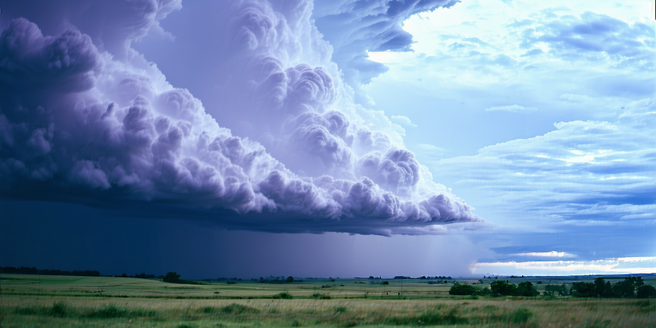
Understanding Meteorological Models
Meteorological models play a crucial role in understanding and predicting weather patterns, including rainfall. These models simulate the atmosphere using mathematical equations that describe the physics of air movement, moisture, and temperature changes. They incorporate vast amounts of data from ground observations, satellites, and other sources to create forecasts. Various models exist, such as global climate models (GCMs) that cover the entire Earth, and regional climate models (RCMs) that focus on smaller areas. The accuracy of these models depends on the quality and resolution of data fed into them. Continuous improvements in data collection methods and computational capabilities are enhancing the precision of these models. Understanding these models helps meteorologists make informed predictions about future weather events, providing valuable information for agriculture, disaster management, and water resource planning.
The Role of Historical Weather Data
Historical weather data serves as a vital component in the study and prediction of rainfall. By analyzing past weather patterns, scientists can identify trends and anomalies that help in forecasting future conditions. This data includes information on temperature, precipitation, wind speed, and other meteorological variables over time. It is collected from various sources such as weather stations, satellites, and climate databases. Using historical data, researchers develop statistical models to predict rainfall patterns and assess climate variability. Such models can identify correlations between different weather events and variables, thus enhancing the accuracy of rainfall predictions. Furthermore, historical data is essential in validating the outputs of meteorological models, ensuring that they accurately represent real-world conditions. The insights gained from this data are crucial for agricultural planning, water management, and risk mitigation strategies.
Machine Learning in Weather Forecasting
Machine learning is revolutionizing weather forecasting, including the prediction of rainfall patterns. By processing vast amounts of meteorological data, machine learning algorithms identify patterns and relationships that traditional models might miss. These algorithms can incorporate data from various sources, including ground stations, satellites, and historical records, to provide accurate and timely forecasts. Techniques such as neural networks and decision trees are employed to analyze complex datasets and improve predictive capabilities. The adaptability of machine learning allows for continuous improvement in forecast accuracy as new data becomes available. Additionally, machine learning can handle non-linear relationships and provide probabilistic forecasts, which offer a range of possible outcomes with associated confidence levels. This innovation is significantly enhancing the ability to anticipate weather events, thus supporting better decision-making in agriculture, disaster management, and climate science.
Satellite Data Utilization
Satellite data has become indispensable in the field of weather prediction, significantly enhancing our ability to anticipate rainfall. Satellites provide comprehensive, real-time observations of the Earth’s atmosphere, offering valuable insights into cloud formation, storm development, and precipitation patterns. This data is crucial for meteorological models that predict weather events, including rainfall. Satellites observe weather phenomena on a global scale, covering areas that terrestrial weather stations cannot reach, such as oceans and remote regions. They provide information on various atmospheric parameters like temperature, humidity, and wind speed, which are essential for accurate weather forecasts. The integration of satellite data into predictive models helps improve the spatial and temporal resolution of forecasts, leading to more precise rainfall predictions. Furthermore, advancements in satellite technology continue to enhance the quality and accessibility of atmospheric data for meteorologists worldwide.
Challenges in Predicting Rainfall
Predicting rainfall presents several challenges due to the complexity and variability of weather systems. One major challenge is the accurate representation of processes like convection and cloud formation in meteorological models. These processes occur on small scales and contribute significantly to precipitation but are difficult to simulate accurately. Additionally, limited availability of high-resolution data can hinder the precision of forecasts. Factors such as climate change add to the uncertainty, altering traditional weather patterns and making historical data less reliable. The chaotic nature of atmospheric dynamics also means that small changes in initial conditions can lead to vastly different outcomes. Developing forecasts that precisely predict the location and intensity of rainfall requires continual advancements in observational techniques, modeling approaches, and computational power. Addressing these challenges is essential for improving the accuracy of rainfall predictions and supporting effective water management and disaster preparedness.
Future Trends in Rainfall Prediction
The future of rainfall prediction is being shaped by advancements in technology and scientific understanding. Emerging trends include the integration of artificial intelligence into meteorological models, which enhances the ability to process vast datasets and improve prediction accuracy. Increased use of high-resolution satellite imagery and remote sensing technology is providing more detailed and timely atmospheric data. Additionally, advancements in computational power are allowing for more sophisticated simulations that capture atmospheric dynamics with greater detail. As climate change continues to influence weather patterns, there’s a growing focus on developing adaptive models that can account for these changes. Collaboration between international meteorological agencies is also enhancing data sharing and model development. These trends promise to improve the accuracy and reliability of rainfall forecasts, which are critical for sectors dependent on climate conditions such as agriculture, water management, and disaster response.
